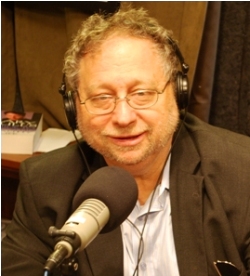From Journalism to Jingoism |
There were even times in this time of terror that the media seemed to terrorizing us more than enlightening us. News about terror often became distancing and frightening with alarmist reporting of an often unsubstantiated, if not, misleading kind, leading to a panicked response with millions of Americans ready to sacrifice their basic freedoms for security. In many instances, the first stories, and 'breaking news' bulletins forecasting new attacks proved wrong, based on skimpy evidence or no evidence at all.
Millions of people ended up relying on such reports, often believing they were being well served. Far too many viewers then believed they were 'in the loop,' in the know, and getting the 'real' story. (Ironically, much of the entertainment programming on the air is now called 'reality television') so distinctions between 'faction' and fiction are often elusive.
After all, TV News looks so authoritative and comprehensive. It is packaged to be perceived as 'credible' and then delivered with well honed and tested techniques designed to be believable.
Cumulatively, this image-driven approach often supplants information. Today's picture driven mediums conceal as much as they reveals. The problem is worse than ever, because all but a few journalists have effectively been barred from battlefields stretched from the East of Afghanistan to the West Bank of Palestine.
Increasingly, government sources set the agenda and help frame the issues and the news. Access to documents and details are limited by policy and practice until recently when documents unearthed by WikiLeaks showed the vast gap between what politicians are telling us and each other.
News coverage of this conflict is worse than ever also because many media institutions have confused jingoism with journalism. Truth telling tends to be degraded when American flags start flying in the lapels of newscasters and in the graphics surrounding news sets. In that environment, voices of dissent quickly disappear like some dissident priest in Argentina during the days of that country's 'dirty war'. It took The New York Times almost two months to discover and report that news management techniques were orchestrating what TV news casts were covering, and that the TV reporting and pundit shows were leaving out dissident voices once the war was up and running.
Ironically or not, in a war against the Taliban condemned for its treatment of women, most of the pundits on American TV remained men, according to The Washington Post. Only 12 female experts interviewed against 78 males on the weekend shows in the month after September 11th, the Post found. The writer mocked this clear pattern of bias by repeating, "men, men, men" as if we needed a reminder of the macho ethic that takes over when media discussions on the use of military power get underway.
We live in an age of media politics, governed not just by politicians but by what is in an effect a 'mediaocracy' - a mutually dependent relationship between media and politics - a nexus of power in which political leaders use media exposure to shape opinions and drive policy.
Political candidates increasingly rely on their media advisors and spend small fortunes to buy air time to get their poll tested messages across. Governments don't have to buy time but their media operations have even bigger budgets to hire small armies of strategists and speechwriters. This mediaocracy then sets the agenda and frames what issues get the focus, and which do not.








 News Director Danny Schechter is an author, blogger and filmmaker. He edits Mediachannel.org, a global media issues network and directs films. His latest Plunder: The Crime of Our Time treats the financial crisis as a crime story. He can reached at
News Director Danny Schechter is an author, blogger and filmmaker. He edits Mediachannel.org, a global media issues network and directs films. His latest Plunder: The Crime of Our Time treats the financial crisis as a crime story. He can reached at 